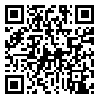BibTeX | RIS | EndNote | Medlars | ProCite | Reference Manager | RefWorks
Send citation to:
URL: http://hayat.tums.ac.ir/article-1-134-en.html
Background & Objective: High rates of cesarean delivery have worried health policy makers. One of the main reasons for cesarean section in Iran is cesarean election. Health Belief Model (HBM) is one of the most powerful models used in health education programs. The objective of this study was to determine the effect of education designed based on HBM on choosing delivery mode among pregnant women.
Methods & Materials: In this experimental study, 128 nulliparous women were recruited from Shahrood health care centers and private gynecologists' offices. Samples were randomly allocated into two equal groups. Women in the experimental group participated in two 40-minutes educational classes which were designed based on HBM. Data were gathered both before and after the classes, and then were analyzed using SPSS.
Results: The results indicated that there were no significant differences between two groups in demographic characteristics, infertility history, disease history, perceived susceptibility, and perceived benefits and barriers. After the intervention, significant differences were found between perceived susceptibility (P<0.001), perceived severity (P<0.001), perceived barriers (P=0.004), with practice (choosing the delivery mode) (P<0.001).
Conclusion: The results showed that using HBM in program designing was effective in the pregnant women's decision-making toward delivery mode.
| Rights and permissions | |
 |
This work is licensed under a Creative Commons Attribution-NonCommercial 4.0 International License. |





